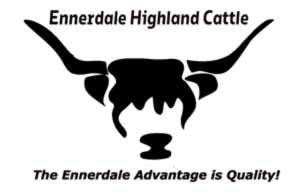Over our years of breeding Highlands and talking to potential highland breeders, we have found many of the 'first time cattle owners' are not aware of the wide range of responsibilities for owning cattle. It is so easy to get tied up in the breed - looking for animals with good conformation etc, and then forget about the legalities, regulations, ‘red tape’ and responsibilities of cattle ownership. Below are a few points to consider before purchasing your first Highland to help the transition run smoother for Australian owners.
Contact your Local Land Services
Owners of small farms that have not previously been assigned a Property Identification Code (PIC) should register with their Local Land Services, This can be done online. A PIC is assigned for the purpose of identifying land used for agricultural purposes. Local Land Services also maintain PIC registers and are fundamental to the operation and integrity of the National Livestock Identification System (NLIS) for cattle.
Establishing your property
Whether you are on 5 acres or 5000 acres you really need to consider the status of your infrastructure. Cattle need a well-fenced environment with adequate supplies of safe feed, water and shelter.
Fencing
Most farmers use electric fencing, and it certainly works well if it is working! We have had enquiries about Highland Cattle and folk were told, "they won't eat the tree I planted up the driveway."
We strongly suggest this will not be the case!! If they don't eat them, they will rub up against them and scratch. Trust us, your little trees up the driveway won't last long! Fence off any area you don't want the cattle "exploring".
Make sure your paddocks are free of rubbish - plastic bags, old baling twine, pieces of wire from broken fences. Always remember to pick up wire after fencing. Unfortunately, foreign objects if eaten can be devastating - not everything they eat will pass through and may cause pain or discomfort for the animal and an expensive visit from the Vet.
Clean Water
It is essential your cattle have access to clean water. We were once told by an old time farmer - clean water is the most important thing for healthy stock. The quantity is also important. A cow can drink up to 7-10% of its body weight in water a day. If a cow is lactating it will be more as well as in extreme weather conditions.
Shelter & Shade
Highlands do moult in the summer months, but they can suffer from the heat as any other cattle breed. In the height of summer, on very hot days we notice our cattle will sit under a tree during the day and graze at night when it is cooler. They can often be seen standing in the dam or river to cool off as well.
Shelter in winter months is not a problem as the highlands are very hardy and with their thick winter coats they adapt to the temperature well.
Yards
Ideally, cattle yards should be in place before you bring your new purchase home. It is very easy to get carried away and excited about your new four legged arrivals, but you may be putting yourself and the cattle at risk of injury. These projects can be expensive, especially yards (there are so many designs available).
You could check out designs online, visit established farms, talk to your neighbours, go to Agricultural Field days and get an idea of what suits you best. Your yards can start out very basic and grow as your herd grows, but running cattle through the yards should be easy, without stress for the cattle or yourself. Professor of Animal Science, Temple Grandin, has developed the best livestock handling facilities in our experience.
Arranging your fences in lane-ways to get the cattle to the yards is also a good tip. A hobby farmer may only use their yards up three times a year - and if they are set up correctly to start with, then you never need to go back. Otherwise, you will be chasing cattle that are totally confused as to where they are to go and both cattle and owner can get stressed unnecessarily.
We have taken an extra step to slightly modify our yards suitable for highland cattle, and have also set our yards up under cover for the comfort of both us and the cattle. We believe the key to less stress when working in the yards is patience and not rushing the animal. Highland Cattle will slowly work their way through standard yards if they are given time.
The older animals with larger horns learn to turn their heads, we will often run the younger ones through with no procedure - maybe just a brush - to get them use to the yards and not be frightened. Another way is to let the cattle have access to the yards and sometimes feed them in there, so it is a familiar place.
If you visit a property with horned animals, and you notice a lot of uneven or odd bent horns, this may be an indication of a handling problem - the way the animals are yarded or managed in the yards is deficient in some way. If a horned animal is rushed and its horn gets stuck - it may be damaged and cause unnecessary pain for the animal. If severe, the horn will grow unevenly.
Health
Diseases with all cattle can vary from state to state in Australia, but all cattle should be vaccinated from 6 weeks old and again 4 weeks later - then yearly with a 7 in 1 vaccine.
Ultravac 7-in-1 vaccine is used for the prevention of pulpy kidney disease, tetanus, black disease, malignant oedema (blackleg-like disease), blackleg and leptospirosis. The vaccine protects the animal from productivity losses associated with leptospirosis, and prevents the animal from contaminating the environment and placing un-vaccinated cattle and people at risk.
Highlands are a hardy breed, but they too can suffer from worms and lice, and these will need to be addressed to maintain healthy Highlanders. The methods for treatment vary, back lines are available, and it is a simple case of running the animals through the yards and pouring a drench along the spine of the beast.
There are a good variety of drenches available - it really depends on your needs. Some now include the first two stages of liver fluke and are also rain fast. Highlands can be prone to lice compared to commercial breeds because of the thick hair - the lice can hide from the sunlight, so keep an eye on them in the winter months.
Pestivirus is now a growing concern in Australia and moving throughout the states. Pestivirus (also known as BVDV - bovine viral diarrhoea virus) causes abortion, ill thrift in young animals, diarrhoea and respiratory disease.
There is a vaccine for this disease and yearly vaccination is recommended. It is transmitted from cow to cow by contact and even though you may not have it in your herd - your neighbour might and it can be passed on when animals gather on the fence line.
BEWARE OF JOHNE'S DISEASE

A serious concern for all cattle breeds - a fatal gastrointestinal disease. Symptoms of disease may not show up for many months to years later. This infection is contagious, which means it can spread from one animal to another. Ennerdale Highland Cattle live in a Johne's protected zone. We rarely introduce new animals to the herd and if we do they are blood tested and quarantined before mixing with our herd to ensure we retain our elite herd health status.
Before purchasing animals we suggest checking with the local authorities to the Johne's status of the area you are buying from. Ask questions Have the cattle been moved in their lifetime? If possible find out about neighbouring cattle movements and status. Cattle owners living in a Johne's area can join a programme and have their herd tested.
Johne's is a serious problem - Be aware - Minimise the risk of infection.
Hoof Care
Cattle hooves grow approx. 3/16 of an inch per month and completely regenerate in about 14 months. Highlands are known for longevity compared to other cattle breeds, therefore, attention must be taken with hoof care in older cattle. Many Highland Cattle in Australia present with poor conformation of feet and pasterns. These cattle should be avoided as the problem may last for generations and effect the mobility, longevity and consequently the production of affected cattle over time. The longevity of the highlander means the hooves ( even good hooves ) will get longer with age. If you live on soft ground you may be required to trim the hooves of older cattle every few years. Hoof trimming helps keep the older cows comfortable and producing. If your lucky enough to have some rocky patches in the paddocks - you will find the cattle hooves will break off naturally.
Enjoy your healthy Highland Cattle Fold!
